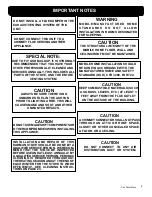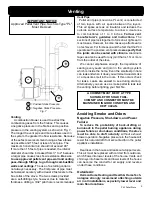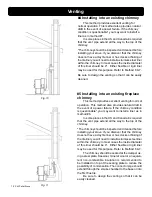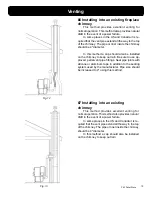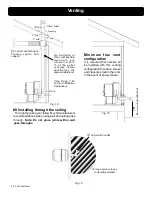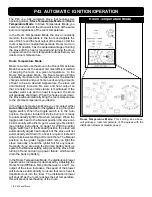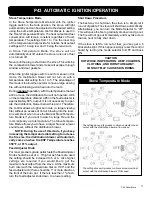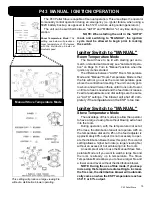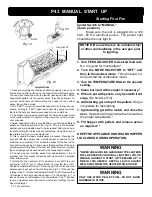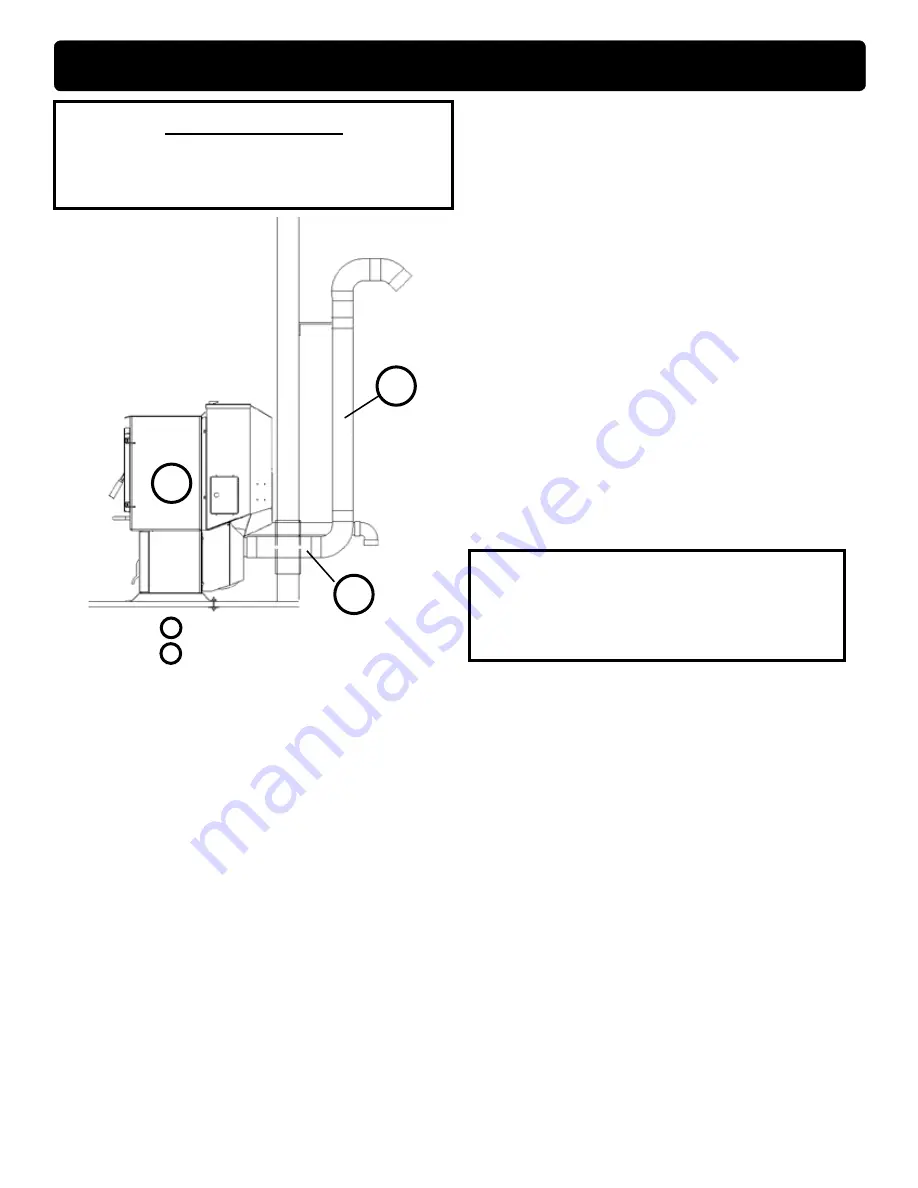
9
P43 Pellet Stove
vent Pipe
Pellet vent pipe (known as PL vent) is constructed
of two layers with air space between the layers.
This air space acts as an insulator and reduces the
outside surface temperature to allow a clearance
to combustibles of 1 to 3 inches.
Follow vent
manufacturer's guidelies and instructions.
The
sections of pipe lock together to form an air tight seal in
most cases. However, in some cases a perfect seal is
not achieved. For this reason and the fact that the P43
operates with a positive vent pressure
we specify that
the joints also be sealed with silicone.
Aluminum
tape can also be used for any joint that is 1 ft. or more
from the outlet of the stove.
We cannot emphasize enough, the importance of
sealing every seam and joint in the venting system
which is inside the home. Even the smallest pin hole
can leak and when it does you will smell wood smoke
or a creosote smell in the room. If this occurs check
for leaks. Leaks are easiest to see during start-up.
Alternatively you can use a smoke pellet to leak test
the venting before lighting your first fire.
avoiding Smoke and Odors
negative Pressure, Shut-down, and Power
Failure:
T
o reduce the probability of back-drafting or
burn-back in the pellet burning appliance during
power failure or shut-down conditions, the stove
must be able to draft naturally
without exhaust
blower operation. Negative pressure in the house will
resist this natural draft if not accounted for in the pellet
appliance installation.
Heat rises in the house and leaks out at upper levels.
This air must be replaced with cold air from outdoors,
which flows into lower levels of the house. Vents and
chimneys into basements and lower levels of the house
can become the conduit for air supply, and reverse
under these conditions.
Outside air:
harman home heating and hearth & home tech-
nologies strongly recommend attaching outside
air in all installations, especially lower level and
main floor locations.
venting
iMPOrtant nOtice
Approved Pellet Vent Pipe, Such As Type "PL",
Must Be Used.
= Positive Static Pressure
= Negative Static Pressure
+
+
-
+
-
Fig. 7
venting
A combustion blower is used to extract the
combustion gases from the firebox. This causes
a negative pressure in the firebox and a positive
pressure in the venting system as shown in Fig. 7.
The longer the vent pipe and more elbows used in
the system, the greater the flow resistance. Because
of these facts we recommend using as few elbows
as possible and 15 feet or less of vent pipe. The
maximum horizontal run should not exceed 48".
If more than 15 feet of pipe is needed, the interior
diameter should be increased from 3" to 4" because
a larger pipe causes less flow resistance.
be sure
to use approved pellet vent pipe wall and ceiling
pass-through fittings to go through combustible
walls and ceilings.
The use of a starting collar is
not always necessary. The first piece of pipe must
be fastened securely with at least 2 fasteners to the
flue collar of the stove. The two screws provided
are a self-drilling style, however, due to material
thickness, drilling a 3/32" pilot hole is recommended.
a chiMneY MuSt be OF a tYPe
Suitable FOr SOlid Fuel.
chiMneY and cOnnectOr MuSt be
Maintained in gOOd cOnditiOn and
KePt clean.
Summary of Contents for P43
Page 2: ......





